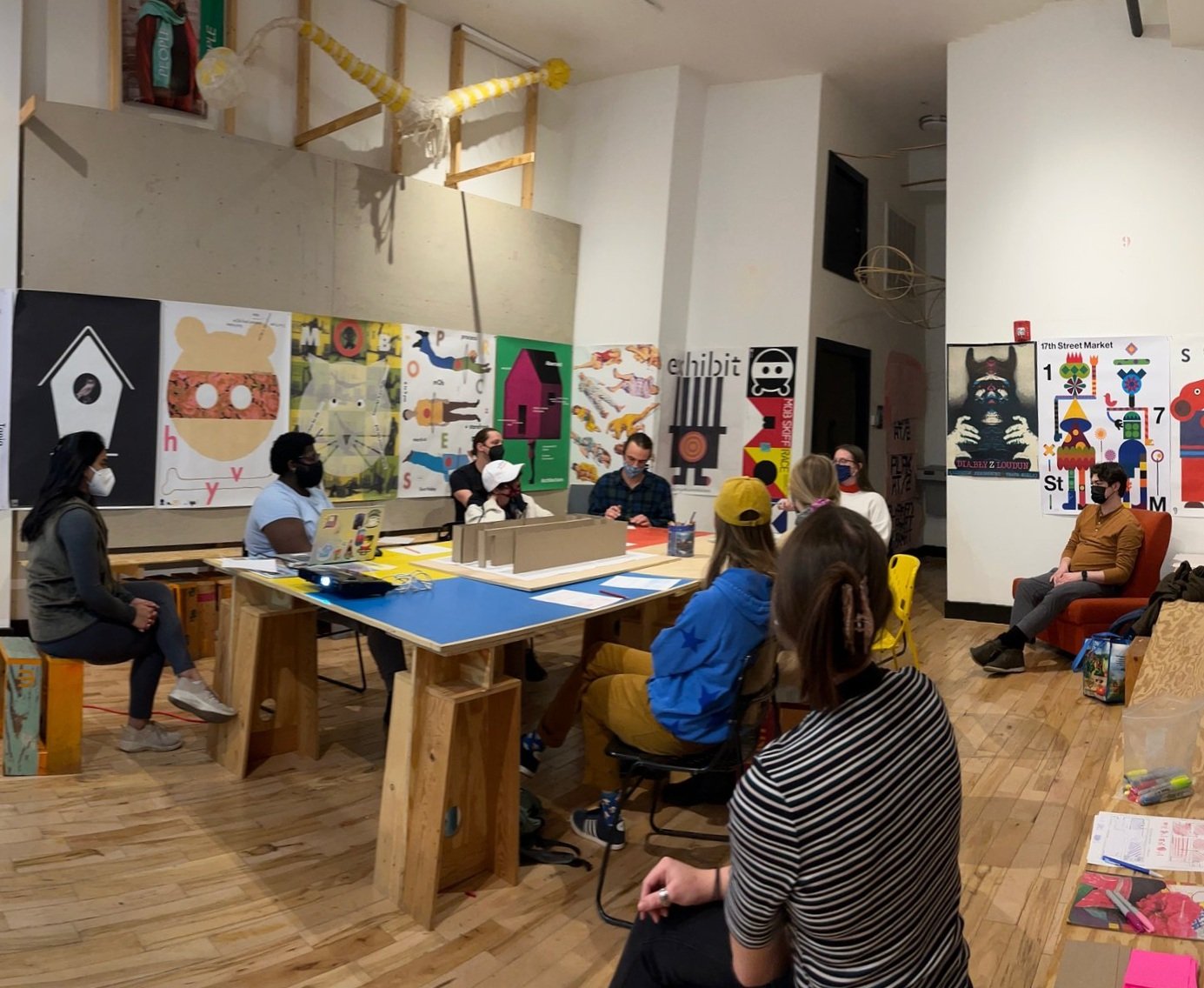A mOb jOurnal
Hi, my name is Erin.
When I started at VCU, I knew I was passionate about sustainable design, but I wasn’t sure what professional path that would lead me down. Biology, engineering, interior design, architecture, and urban planning are all fields that have a significant impact on the built environment, but urban and regional studies was unlike any one of my interests alone. It represented designing with community values at the core of every intention.
As there is no natural avenue for creative expression within the urban and regional studies field at VCU, I found myself searching for something more.
discOvering mOb
I initially heard about the mOb studio course from a friend while talking about the intersection of my interests. It is an interdisciplinary studio course that bridged the gap between narrow, structured majors.
“Middle Of broad [mOb studio] is an experimental design lab uniting the departments of Graphic Design, Fashion Design, and Interior Design to create a hotspot for the school’s up-and-coming designers.”
My interest peaked. What does that mean? Could I, an Urban Planning student, be a part of this immersive design course? The answer was yes.
It was here I got to experience design through a different lens. For the first time I was able to see how our different approaches to design gave us the edge of a holistic perspective.
mOb prOject
When I joined the mOb studio, Storefront and mOb were moving towards new leadership and ideas. Storefront asked mOb students to help redesign this shared space their future needs in mind. Though I did not have formal experience as an Interior Designer as some of my teammates did, I knew how to design an equitable, resilient environment while working with a community.
My team and I knew one thing: the way people think about where they work is changing. With the start of the pandemic and the new emphasis on designing a ‘contactless’ community, we wanted our design to celebrate the relational themes between Storefront and the mOb studio to rebuild the community between both organizations.
The crux of our design was placing a large working table along the main intersection of the mOb and Storefront sides of the studios.
This table would serve as a functional space for people to come together as well as a symbol of the intersecting themes between the two organizations:
Create Community
Invoke Curiosity
Inspire Solutions
Other engagement efforts such as holding focus groups and exploring Six Points Innovation Center (6PIC) and local coworking spaces aided the process of creating feeling-based, placemaking programming in smaller pockets throughout the space.
Impact
As the mOb studio and Storefront continue to evolve over the next year, they expand on these findings as we all acclimate within this space. Though, from my experience on this project and with the mOb studio, I am left with one profound lesson: design should focus on creating community space as opposed to a space for the community.
Erin Hayes is now a Design & Engagement Intern at SFCD.



